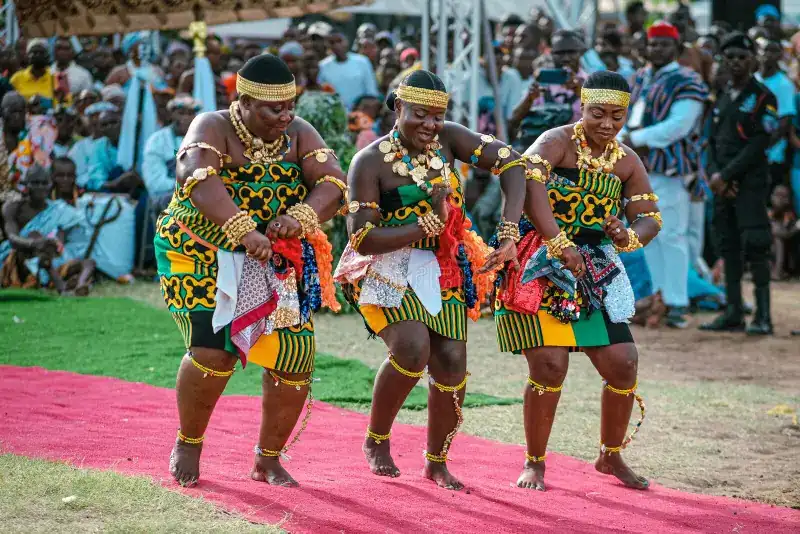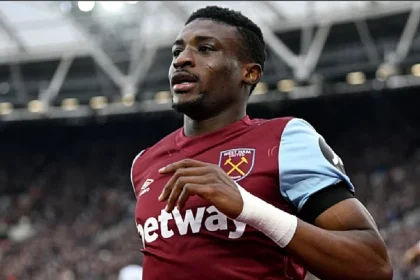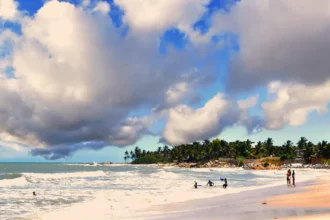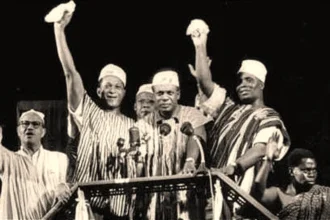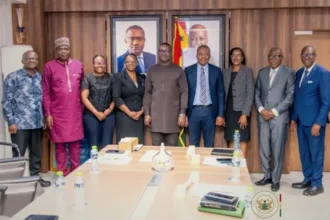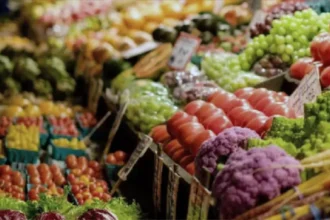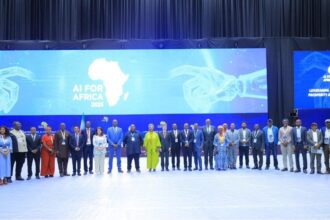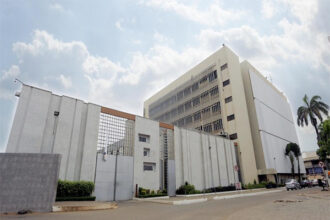Every first Saturday in November, something truly magical happens in the heart of Ghana’s Volta Region. The usually quiet town of Anloga bursts to life with colour, music, and cultural pride as the people of Anlo, as well as visitors from across the country and beyond, gather to celebrate Hogbetsotso, one of Ghana’s most historic and vibrant traditional festivals.
More than just a celebration, Hogbetsotso is a living story of freedom, a tribute to ancestral wisdom, and a strong symbol of unity. For the Anlo-Ewe people, this is not just a date on the calendar. It is a sacred moment to honour the courage of their forebears and to showcase the deep-rooted traditions that define their identity.
The History Behind the Festival: From Oppression to Liberation
The roots of Hogbetsotso stretch back to the 17th century. The Anlo people were once residents of Notsie, a walled city in present-day Togo, where they endured the harsh and oppressive rule of King Togbe Agorkoli. Life under Agorkoli was unbearable, and the people longed for freedom.
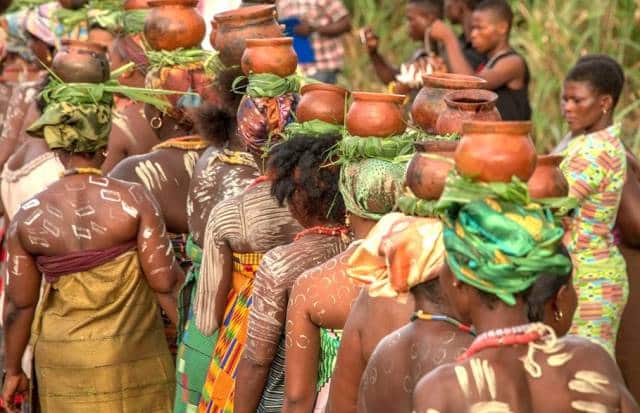
But the high mud walls of Notsie seemed impossible to overcome-until the women of the community came up with a clever plan. By continuously pouring wastewater on a section of the wall, they softened it over time. One night, the Anlo people broke through the wall and escaped, cleverly walking backwards to mislead their pursuers. That historic escape is at the very heart of the Hogbetsotso Festival-Hogbetsotsoza, literally meaning “festival of the exodus.”
The Anlo-Ewe migration is also believed to have begun even earlier, from southern Sudan, passing through regions like Oyo in Nigeria, Ketou in Benin, and Adja Tado in Togo, before finally settling along Ghana’s southeastern coast. This migration, marked by resilience and unity, is remembered and celebrated every year with unmatched passion.
The Meaning & Origin
It is derived from the Ewe words “Hogbe” or “Hohogbe”, which literally translates to “the day of exodus”. This refers to that historic moment when the Ewes in the Dogbo quarter of Notsie, the walled city in present-day Togo, made their daring escape from the wicked rule of King Agorkorli.
To confuse their enemies, the Ewes walked backwards as they fled, leaving behind deceptive footprints that suggested they were heading into the city, rather than out. It was an act of strategy, courage, and unity.
To honour that bold escape and the visionary traditional leaders who guided the people to safety, the Hogbetsotso Festival, the “Festival of the Exodus,” was born. It remains, to this day, a sacred time of remembrance and cultural celebration for the Anlo-Ewe people.
Hogbetsotso is Indeed a Season of Renewal
The Hogbetsotso Festival is not just a single-day event; it’s a whole season of reflection, cleansing, and reconciliation. Before the grand celebrations, a peace-making process is held to settle disputes and restore harmony among families and communities. This practice is rooted in the belief that unity was vital to the ancestors’ successful escape, and it remains just as important today.
The community then undertakes a cleansing ritual, where the ceremonial stools of the chiefs-believed to embody ancestral spirits-are purified with libation. There is also a massive environmental clean-up stretching from the estuary of the Volta River, across towns, and symbolically ending at the Mono River in Togo. These acts represent a fresh start, symbolising the washing away of the past and welcoming a peaceful future.
The Grand Durbar – A Spectacle of Culture and Colour
Everything builds up to the climax. The grand durbar is held at Hogbe Park in Anloga, the traditional and spiritual capital of the Anlo State. This is where culture truly comes alive. Chiefs arrive in stunning kente cloths and royal regalia, surrounded by drummers, dancers, and traditional warriors.
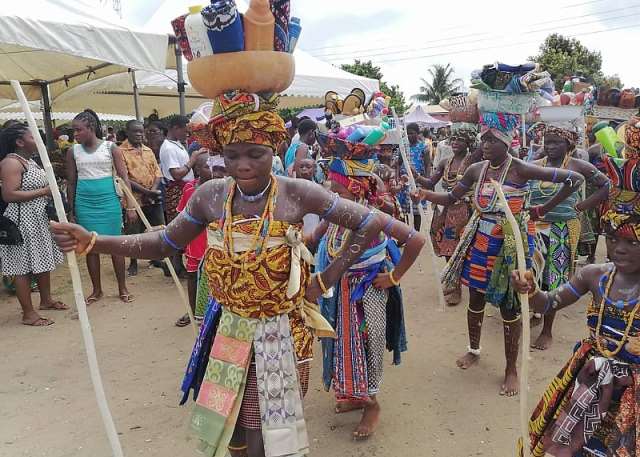
The air vibrates with the beats of the Agbadza dance, a vigorous and joyful traditional dance originally used in times of war, now repurposed to express freedom and gratitude.
Agbadza, once known as atrikpui, mimics the movement of birds in flight-symbolic of the escape from Notsie. Today, it has become a cultural staple, performed at funerals, naming ceremonies, and public gatherings beyond just Hogbetsotso.
Another energetic dance often seen during the festivities is Borborbor, which adds even more rhythm and excitement to the celebration.
One of Ghana’s Proud Attractions
Hogbetsotso is not only for the people of Anlo. Over the years, it has grown into a national and even international cultural event, attracting dignitaries, tourists, and culture lovers from far and wide.
Back in 2019, I remember how the former Presidents Jerry John Rawlings (of blessed memory) and John Dramani Mahama graced the festival. The theme was “Uniting Anlo through its value for the benefits of its citizens and the nation at large,” and it emphasised how tradition can drive development in a place like Ghana.
The 2022 edition marked the 60th anniversary of the modern celebration. It was a grand spectacle. The theme, “60 years of Anlo Hogbetsotso Za: Uniting for Development, Sustaining our Unique Cultural Commonwealth for Future Generations,” attracted top national leaders.
Among the dignitaries were Vice-President Dr. Mahamudu Bawumia, Otumfuo Osei Tutu II (Asantehene), Ga Mantse King Tackie Teiko Tsuru II, and Kwahumanhene Daasebre Akuamoah Agyapong II. Their presence showed just how important Hogbetsotso has become on the national stage.
More Than Culture – A Tool for Growth
Beyond tradition and entertainment, the Hogbetsotso Festival brings real benefits to the people. It boosts tourism, strengthens the local economy, and fosters unity among the many Anlo towns that participate, are Anloga, Keta, Kedzi, Vodza, Whuti, Srogboe, Tegbi, Dzita, Abor, Afiadenyigba, Anyako, and many more.
For tourists and first-time visitors, the festival is an unforgettable cultural experience. You get to witness ancient customs, join in traditional dances, taste authentic Ewe dishes, and feel the warmth of Anlo hospitality.
In the End…
To witness Hogbetsotso is to step into a powerful story of resilience and unity, a story still being told with every drumbeat, every dance, and every libation poured.
For anyone planning a trip to Ghana, especially lovers of history, tradition, and cultural expression, the month of November should be marked in bold. Because Hogbetsotso is not just a festival. It is a celebration of life, liberty, and legacy.
And in a time where unity and peace are more important than ever, it offers a shining example of what communities can achieve when they come together.
See you this November. Hogbetsotso awaits!


